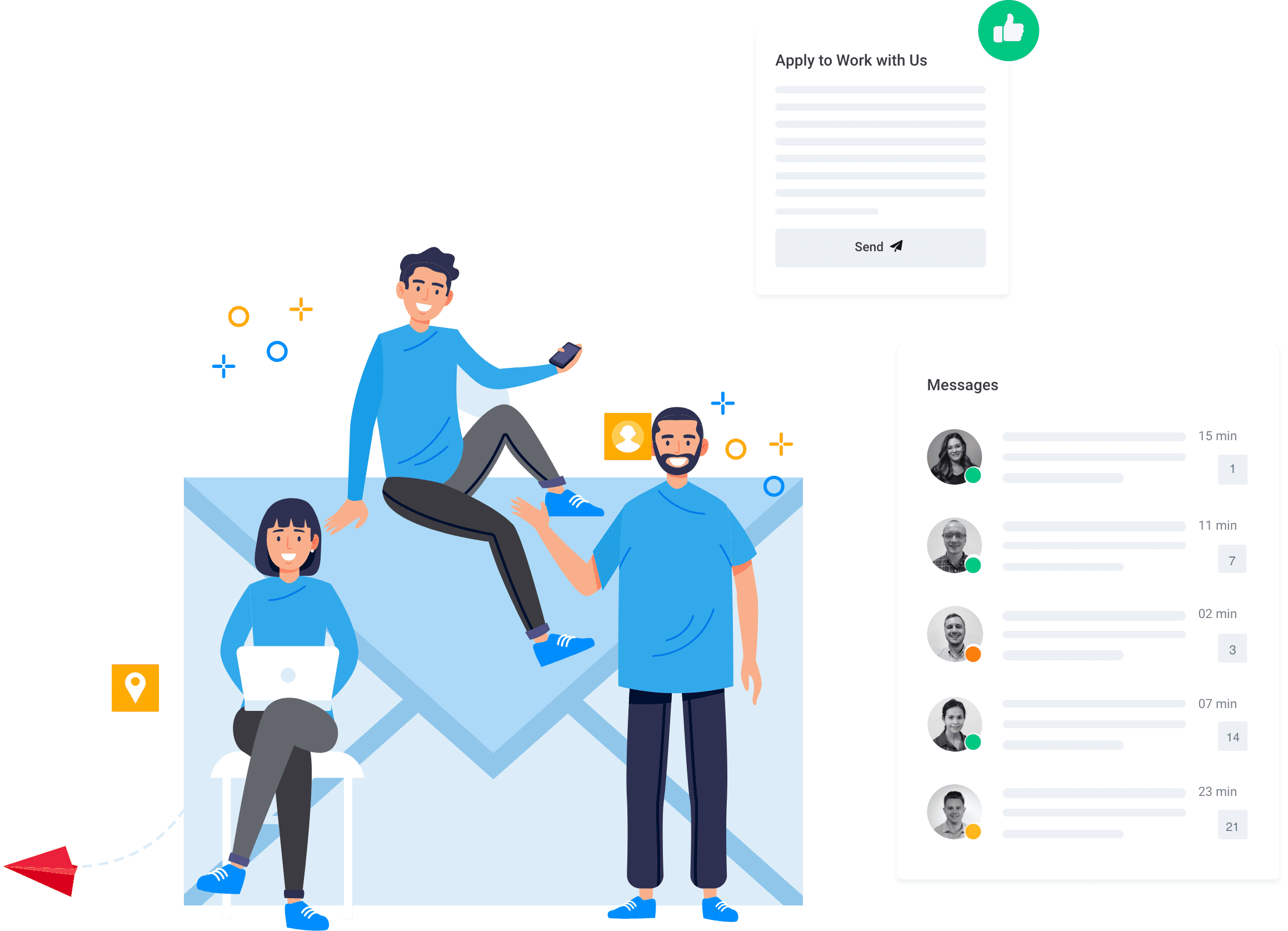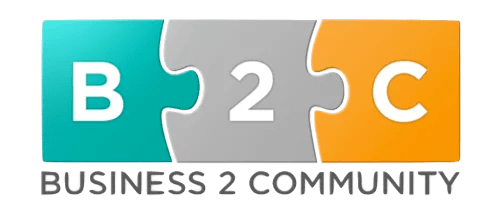Today we’re going to dig a little deeper into the topic of SEO, a topic that’s near and dear to our hearts. SEO stands for search engine optimization in Google (and other search engines such as Yahoo, Amazon, YouTube, Facebook, etc.). A few years ago, search engine optimization worked by ranking websites that mentioned a particular keyword over and over again. Today, Google and other search engines are getting smarter, now ranking sites that create value and have an intelligent strategy behind them. If you want to show up, you must do everything you can to make your website the most authoritative and most relevant.
Understanding How Google Works
When looking at what Google is trying to do and how its creators designed Google, we must go back to its inception and how it got started.
Two graduate students, Larry Page, and Sergey Brin, founded Google in the early ’90s. They were working to create a digital library that could categorize the internet and pull up the most trustworthy websites. The goal of the project was for the indexing system to understand which sites are more relevant or authoritative than others, so those who were doing research online could find the best source.
Part of their project was Backrub (which eventually would become PageRank). Backrub made it so that if one website had more backlinks from other websites, it must be more relevant. They started having a specific number of backlinks for each site to quantify the exact authority of a particular page.
This project was the basis of the original search engine that ultimately became Google.
In 2019, Google’s whole mission is to show the most relevant results for whatever you are searching for. It even can know what you’re searching for before you search. How often have you started to type something in, and Google already knows what you’re trying to find?
There are 200+ factors that Google looks at in determining who shows up where, and none of it is by accident or choice. Today, search engine optimization is building up your website until it becomes the most relevant result. Do this by looking at every factor Google is looking at. Use them to rank your site.
Identifying Your Target Audience for SEO
Whether you are a B2B or B2C business, you have somebody that you’re trying to reach. Your job is to know your prospects, their values, and their thought process before making a purchase. Once you know what the decision-making process looks like, you can break it down into three sections along your sales funnel:
1. Are they in a research phase or maybe not even aware that your product or service exists? This stage is the top of the funnel. There’s going to be a whole keyword and content strategy before they even realize they need your product or service. Perform every single type of research for each step of their problem that may relate to your product or service.
The next phase is the middle of the funnel, where your prospect is in the consideration phase. This person is likely looking at alternatives or maybe trying to do it themselves. If it’s for a service provider or vendor, that person is likely doing research and weighing the pros and cons.
The bottom of the funnel is the final consideration phase. Your prospects have decided they need your product or service and are ready to make a purchase.
Your website needs to be a dictionary of whatever product or service that you sell. When your prospects go through the funnel process, you’re going to be in front of them 3 or 4 times. By the time they search for something like “best IT solutions provider Chicago,” and your website shows up, they are already going to recognize who you are.
On-Page SEO Basics
On-page SEO is what you see on your website. Keywords, content, titles, and meta descriptions are all part of on-page SEO.
Keyword Research 2019
Whether you are new to SEO or advanced in the subject, you’ll be excited to learn that there are strategic ways to perform keyword research for free.
“I always recommend using free tools before you go and start buying things, and the best place to start is just searching for a particular keyword and seeing what will Google autofill. When you look at that and scroll to the bottom, and Google will show you related searches. Those would be places you want to start just because Google gives you that first-hand information without even knowing you’re doing SEO. If you click on one of them, Google will give you even more related terms. You can keep doing this and doing this until you have a list of keywords.” – Solomon Thimony, OneIMS
Many paid programs out there that claim to help you find keywords are a packaged version of data from Google.
“90% of has to be coming from Google. They’re the only ones who have that data… there’s no other way anyone could tell you how often someone is searching for a particular keyword…. it’s all coming from various Google products that . Some tools are better than others at delivering that data.” – Taylor Row
Before you begin typing into Google or downloading free tools, take a step back. Look at what are you selling and who are you selling to. Do this to have a strong starting point for your research strategy.
The best approach is to use free first. Go straight to Google and think about what your audience might be typing in to find you.
- Step 1: Search for a particular keyword and look at what comes up in Google autofill.
- Step 2: Scroll all the way to the bottom of the search engine results page, and Google will show you even more related searches.
- Step 3: Click on one of them, and Google will give you more search results and more related searches.
- Step 4: Copy and paste Google autofill and related searches, which are first-hand information right from Google.
- Step 5: Continue to do this until you’ve got a pretty good list of keywords.
- Step 6: If you want to know the search volume, you can head over to Keyword Planner and plug your results into the program. Google will give you some ranges of how much traffic you can expect from each keyword.
Bonus Tip: To measure competition, look at how many results that Google returns on a particular keyword. If there are 58 million pages for a keyword, then it likely has a high level of competition. If there are three million pages, then it is most likely a long-tail keyword for which you will have a higher chance of ranking.
Follow this rabbit hole, and you can quickly come up with 50 iterations per keyword. By following these six simple steps, you will be way ahead of those who go into their content strategy without having done any keyword research at all.
Optimizing Your Website for Search Terms
Google is getting more advanced and smarter by the minute. The ideal goal is to create a user experience that is valuable and relevant to your audience.
When it comes to SEO, there’s that old saying, “Content is King,” which many marketers and business owners overlook. It may sound a little overwhelming to those who are just getting started with SEO on a brand new website, or those just trying to understand how to optimize their website. Don’t be fooled – optimizing your content is as easy as 1, 2, 3!
Start with your title tag – what is the topic of your page? Include searchable keywords in each of those tags that relate to your topic.
Keyword(s) on the same page should talk about the same topic. Make sure that you don’t have five other pages targeting the same keyword; otherwise, keyword cannibalization may occur. Have your main keyword present as early on in the title as possible. Keep your title as short as you can to ensure it doesn’t get cut off on the search engine results page.
Next, you can fill out the meta description and your header tags, making sure your keywords are in each one. Keep doing this for all of your content on every page until you’ve exhausted all on-page factors.
The meta description, along with the title tags and URLs are mostly your advertisement on Google. That is what your audience is going to see if you rank the first or second page, so it is essential to do it right. The key is to create strong content in a small amount of space. Shoot to design 50% of your “advertisement” for Google and 50% of it to entice users to click your link.
Beginner Tip: Installing the Yoast plugin is an effortless way to start optimizing a WordPress site for on-page SEO. This plugin visually teaches you how you to perfect your titles and meta for each page of your website. It is a great way to ensure that you do not accidentally reuse any keywords.
The Bottom Line
- Who is your page targeting?
- How is your audience going to find it?
- What information are they seeking?
Go as deep into your topic as you can. Properly structure your content with optimized title tags and meta descriptions. Think of it as writing a paper – your central theme is the H1 header, which would go at the top of your page. Then you can go into different paragraphs using headers H2, H3, H4, and so on.
There’s no need to over-complicate it –create a good user experience with relevant and valuable content. Providing value for your audience is a habit that you should integrate across all marketing channels, especially when it comes to search engines.
Off-Page SEO Optimization
When do you have to dig deeper into your SEO strategy?
- If you’re not getting the organic traffic you should be getting
- If your competitors outrank you for specific keywords
- If you have a lot of content assets built up around particular keywords
What should you be looking for when trying to optimize your website for off-page SEO? Here is what you should be focusing on, on a day-to-day basis:
- Backlinks: Are other websites linking to your website from their website?
- Social Signals: Do you have mentions on the web, Facebook, Twitter, and other social sites?
- User Engagement: Do users spend time on your page or come on your page for 10 seconds and bounce?
Are Backlinks Still Important for SEO in 2019?
Back-linking is when someone links to a particular page of your website from their website in the form of text (i.e., a hyperlink to your site in a byline) or a picture. The two different kinds of backlinks are “do-follow” and “no-follow.”
By having a “do-follow” link, you can pass the authority of your website to that link. Large sites like Forbes often have “no-follow” links, which is saying “we’re just linking to this website, and Google should not pass it any value.”
Aim for the right combination of both “do-follow” and “no-follow” links because it looks natural. Google wants real results. Avoid anything that seems forced or fake (i.e., you had zero links yesterday, and 10,000 do-follow backlinks today). Never turn down an opportunity for a backlink, even if it’s a no-follow. It’s still an opportunity for your brand to get mentioned on a high-traffic website, which counts toward organic optimization.
Where else can you get backlinks from to grow your website’s authority?
- Industry associations (i.e., Chamber of Commerce website)
- Google My Business
- Yelp
Anywhere you can have your business name/address/domain name added. As long as Google’s spiders can crawl the page, Google will give you value. Beyond that:
- Contribute content on other websites
- Create amazing continent your website to promote it, and others will naturally link to it
The Best Content Management Systems for SEO
If you’re building a new website, which content management system is the best to use for SEO purposes?
While you can build a super-fast website from scratch, WordPress is the best to build out structure and content. Many small businesses use WordPress because it is:
- Easy to build
- Easy to maintain
- Easy to scale
- Easy to manage, and
- Still fits all of Google’s SEO criteria
With essential tools (like Yoast) and a supportive community behind it, open-source CMS like WordPress is the way to go. The most inexperienced user can quickly go in and add content, title tags, and meta descriptions. There is no coding required, and you can get your website up and running in just a few clicks.
SEO 101 – The Bottom Line
Search engine optimization is a process. There are a million different ways to rank, but you have to continue taking action. Create linkable content. Ask people to link to your content. Contribute content to other peoples’ websites. Stay on top of your keyword research.
Ultimately, you want to:
- Clearly define and map out who your content and your product/services are for and how they’re going to find it
- Create profound, relevant, and valuable content
- Optimize your content, so that is very user-friendly
- Exhaust your on-page optimization – title tags, meta description, etc.
- Make sure you have a fast loading time
- Outreach for backlinks
- Ensure consistent company name, address, phone number, and hours of operation across all relative pages































